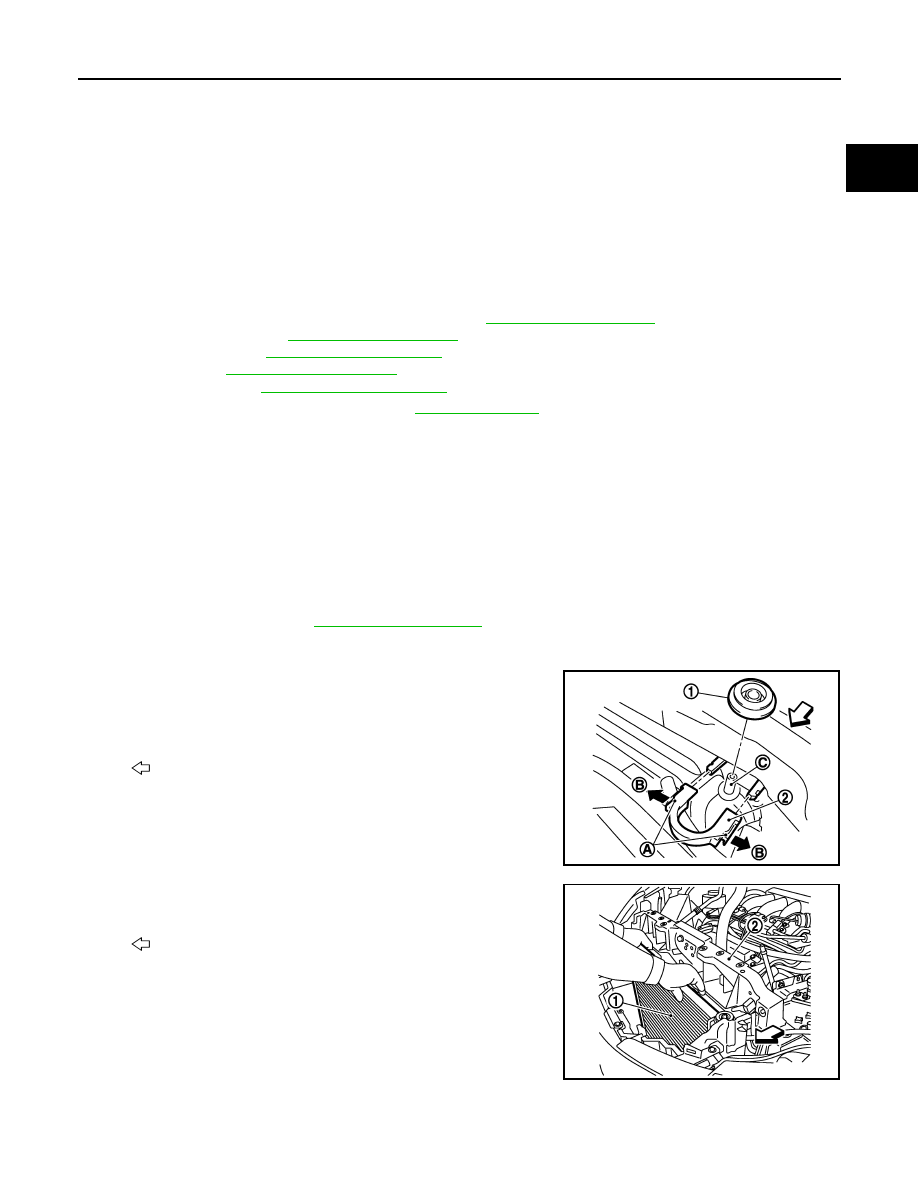Nissan Murano Z51 (2013 year). Manual - part 21

RADIATOR
CO-17
< REMOVAL AND INSTALLATION >
C
D
E
F
G
H
I
J
K
L
M
A
CO
N
P
O
Removal and Installation
INFOID:0000000008457848
REMOVAL
WARNING:
Never remove radiator cap when engine is hot. Serious burns could occur from high-pressure engine
coolant escaping from radiator. Wrap a thick cloth around the cap. Slowly turn it a quarter of a turn to
release built-up pressure. Carefully remove radiator cap by turning it all the way.
NOTE:
When removing components such as hoses, tubes/lines, etc., cap or plug openings to prevent fluid from spill-
ing.
1.
Remove the following parts:
• Engine under cover.
• Radiator core support covers (RH and LH): Refer to
.
• Air duct (inlet): Refer to
.
• Front grille: Refer to
• Horn: Refer to
.
• Hood lock: Refer to
2.
Drain engine coolant from radiator. Refer to
CAUTION:
• Perform this step when the engine is cold.
• Never spill engine coolant on drive belt.
3.
Disconnect reservoir tank hose from radiator pipe (upper).
4.
Disconnect CVT fluid cooler hoses from radiator.
• Install blind plug to avoid leakage of CVT fluid.
5.
Remove radiator cap adapter and each radiator hoses (upper) and radiator pipe (upper) assembly.
CAUTION:
Be careful not to allow engine coolant to contact drive belt.
6.
Disconnect radiator hose (lower) from radiator.
7.
Remove condenser. Refer to
.
CAUTION:
Be careful not to damage condenser core.
8.
Remove each radiator upper clips (2) by pulling the tabs (A) out-
side to release the lock (B) and then remove each mounting rub-
bers (upper) (1).
CAUTION:
Never pull the tabs outside excessively to prevent it from
damping.
9.
Lift up and remove radiator (1) from front of radiator core support
(2).
CAUTION:
Be careful not to damage or scratch on radiator core.
INSTALLATION
CAUTION:
Do not reuse O-rings.
C
: Mounting pin
: Vehicle front
JPBIA1689ZZ
: Vehicle front
JPBIA1699ZZ
Revision: 2012 September
2013 MURANO